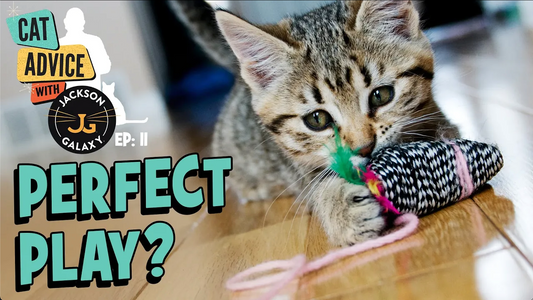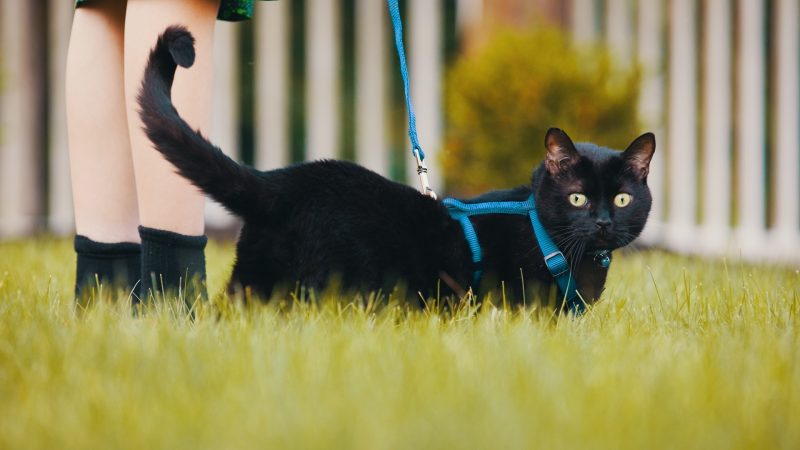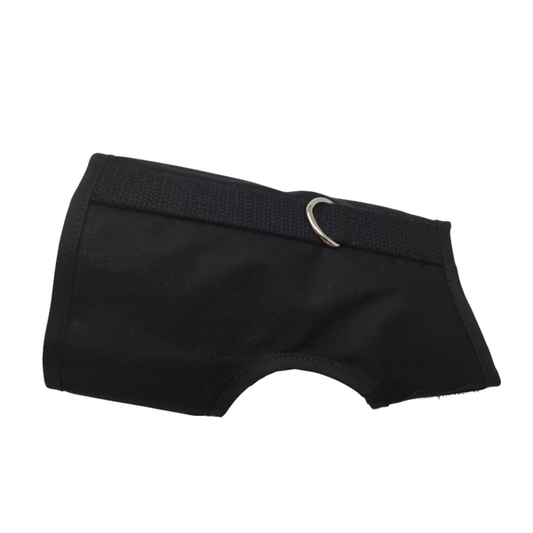Debbie – Lynnwood, WA
Let me first say that I am already a fan of clicker training (a form of operant conditioning). I can’t even count how many times I’ve broken out the technique in all of the seasons of “My Cat From Hell.” Whether it’s to teach your cat to walk on a leash, go into their carrier, or a multitude of other things, it’s a rocking tool to have in your toolbox for a number of reasons: it is a way to stimulate a cat’s mind and body, get them to do stuff they might not normally do (at least not for you), all while increasing the human-cat bond. In fact, look no further than my Cat Pawsitive program (established through the Jackson Galaxy Project). This is a mojo-enhancing, positive-reinforcement clicker training initiative that, among other things, enriches day-to-day life for cats in shelters, and helps to improve adaptability.
Leash-walking is also great because it provides an extra dose of exercise for your cat—and when they are outside, with all of the Raw Cat senses in high gear, they come home tired in a 360 degree way. It’s a great way to change things up, stave off “play boredom,” and just provide an extra complimentary dose of play along with interactive daily sessions. So the short answer is, yes—I’m all for leash-walking your cat, presuming that we have a thumbs-up from the most important family member: the cat actually wants to go for a walk!
If your cat is one who typically avoids hanging out anywhere near the front door and doesn’t exhibit any interest in the great outdoors—or who even might be fearful of going outside—don’t bother. Many cats are content to just sit in the window and watch the world go by, and if that sounds like yours, so be it.
However, if you have a real “door-dasher” on your hands, and your cat is endlessly fascinated with what’s going on out there, then he or she will likely be a perfect candidate for the “cat walk,” as it were.
Here are a few tips and tricks for a successful walking routine with your cat:
-
Your walks should always involve having your cat on a harness, fastened to a leash, so step one will be to get them comfortable with both. This is where clicker training can be invaluable. The basic concept of clicker training is to teach your cat that if they do a certain
action—like ease into their harness—they will get rewarded for that action with… you got it: their favorite treats. In fact, I call these preferred goodies “jackpot treats,” because they should feel like they’ve hit the “jackpot” when they receive them. Take every step slowly: first, getting comfortable with the harness on his body—which could take a while—and then starting with very short intervals of “harness on/harness off/treat.” Once they can walk around the house looking as comfortable as if they didn’t have a harness on, then attach the leash and start again. Each component of the whole can be an uncomfortable feeling for your cat, so easing them into the process and keeping up positive associations is key. When you get to that place where you can walk them in harness and on leash in the house, then it’s time to see how much they like the experience in the great outdoors. - Understand that walking a cat is very different than walking a dog in that, essentially, your cat will walk you. You might take a few steps, then stop so they can take a few sniffs. A few more steps, a quick dart to explore a bug, followed by a few more sniffs, etc. From there, you might go into a little bit of a trot, only to stop again for more sniffing. Clearly, this is not the excursion into aerobic exercise that walking a dog can be, so be prepared for the slower, more contemplative experience of cat-walking.
- Be mindful about making only gentle corrections with the leash. Ease them away from that tree, discourage them from running down that alley, and offer a soft, yet firm, posturing of the leash so they don’t go “in there,” wherever the undesirable “there” may be. Only subtle manipulations of the leash are required, and they will quickly get the hint.
- Remember that your walks should be ritualized. You don’t want your cat running to the door every time you go to the door (although I do recommend keeping the leash and harness near it). Instead, when it’s time to head out, say something predictable like, “It’s time for a walk,” and then jiggle the leash. That’s their signal. And it should be treated as part of what I call their Three Rs: Routine, Ritual, and Rhythm… which is basically a ritualized routine that’s part of their daily rhythm of activity.
Walking your cat can prove to be an enriching, Mojo-rific routine for both of you. And so long as your cat is up for the daily adventure, I’m definitely down for the two of you making a new habit of it. And hey, Debbie—if your boyfriend is embarrassed to be seen with a confident, adventurous woman and her cat, well then that might tell you a little bit about who Mr. Right isn’t… if you get my drift.









